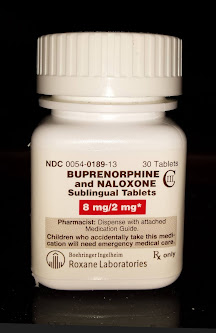Fewer than 8% of overdose survivors are given or prescribed drugs that can block overdose and help them fight addiction

Buprenorphine is given with naloxone to stop overdose, and alone as drug treatment.
—–
As deaths from opioid overdoses continue to set records in Kentucky and the nation, a new study has found that less than 8 percent of overdose patients in U.S. emergency departments are not given or prescribed two medicines that can block another overdose and help them fight drug addiction.
The study was published in Annals of Emergency Medicine shortly after the Centers for Disease Control and Prevention announced that in the first year of the pandemic, U.S. drug-overdose deaths exceeded 100,000 for the first time in any 12-month period. That period, ending in April 2021, had 28.5% more overdose deaths than the same period a year earlier. The study looked at prescriptions written after emergency-room visits for overdose between August 2019 and April 2021. Overdose deaths in Kentucky set a record in 2020.
“In light of the record levels of opioid-overdose deaths, the low levels of naloxone and buprenorphine prescribing are simply unacceptable,” said Kao-Ping Chua, lead author of the study and assistant professor of pediatrics at Michigan Medicine. “Clinicians are missing critical opportunities to save lives both in the emergency department and during follow-up after overdose visits.”
“The same standard we use in caring for patients after anaphylaxis and preparing them with a potentially life-saving prescription should also be applied to patients after an opioid overdose,” said Keith Kocher, senior author of the paper and associate professor of emergency medicine at Michigan Medicine.
Chua said, “There are some clinicians who think that prescribing naloxone encourages patients to engage in risky behaviors, increasing their risk of overdose again, but there’s not a lot of evidence that this occurs.”
Kocher said emergency departments have not traditionally been seen as the place to start addiction treatment, but are being used as “teachable moments” to try and start patients on many other kinds of treatment and lifestyle changes.